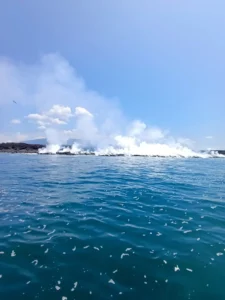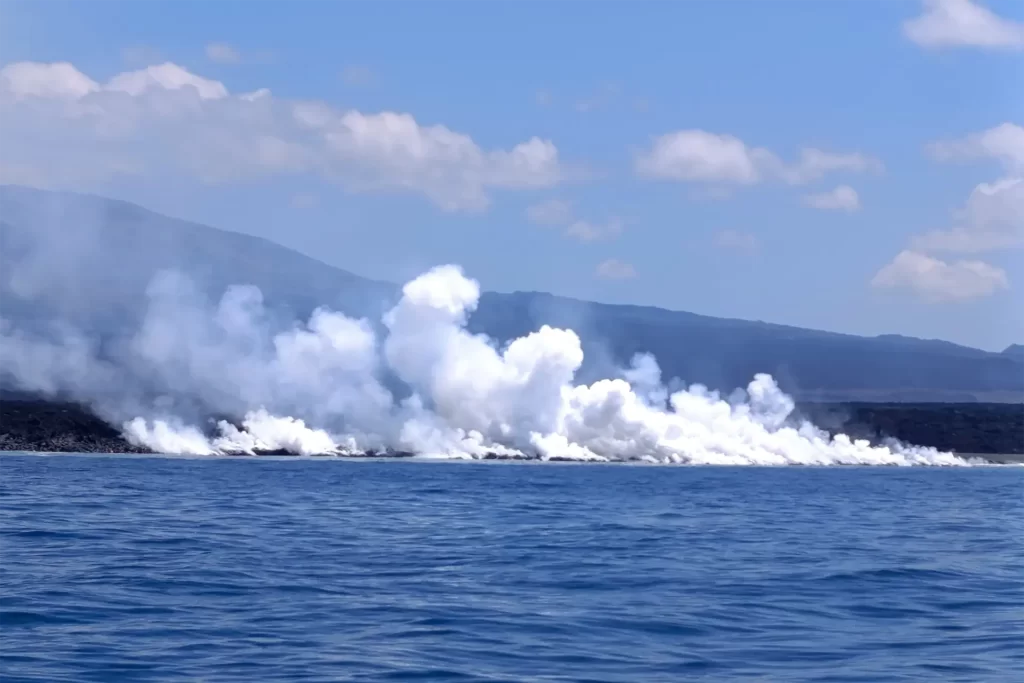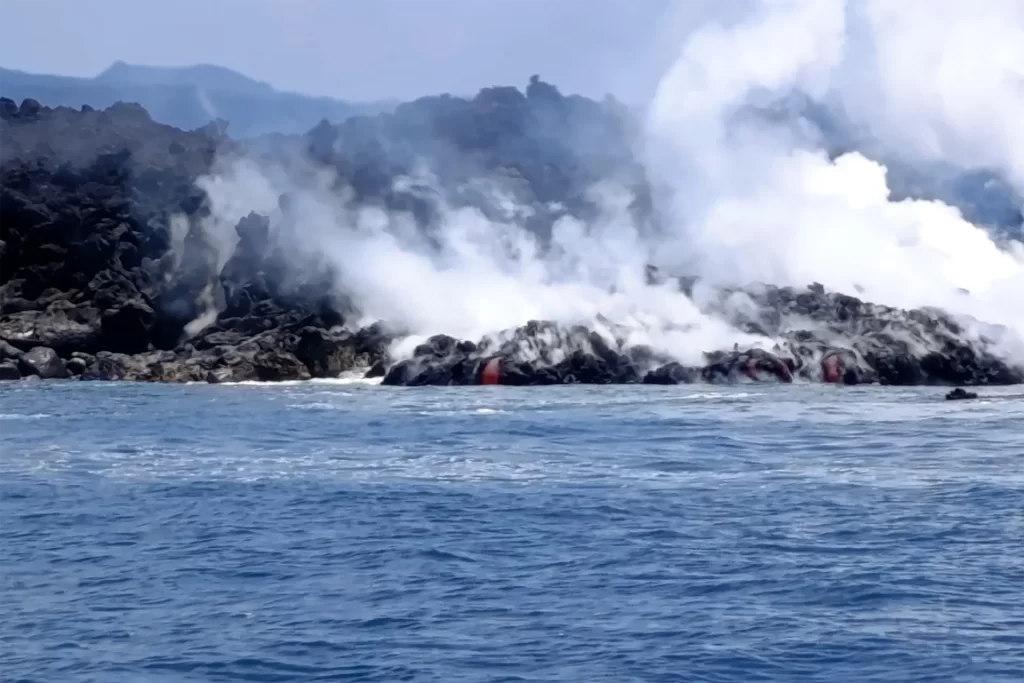Nature has once again captured our attention! La Cumbre’s eruption on Fernandina island has produced a spectacular and breathtaking sight. After 35 continuous days of activity, the lava flow has finally reached the sea, covering over 6 miles.

©DPNG
Since the 2nd of March, Galapagos National Park Rangers stationed in Canal Bolivar, northwest Isabela have used satellite data and seismic monitoring equipment, working closely with the Geophysical Institute.
The experts of the Galapagos National Park reported that the lava flows have damaged the island’s endemic plants and habitat of land iguanas. The experts also expect that the lava flow could have an impact on marine life if it enters the ocean.
Galapagos Conservancy’s mission is to protect the unique wildlife of the Galapagos Archipelago, says Dr. Our Director of Conservation, Jorge Carrion. “We are prepared to provide assistance, if needed, but we also understand that this is a naturally occurring occurrence and our primary responsibility to observe the changes.”
According to reports by the Geophysical institute of the National Polytechnic school, La Cumbre is one of most active volcanoes on the Galapagos islands. The volcano has had a long history of eruptions, dating back to 19th century. Similar events have also occurred in the recent past, such as in 2017, 2018 and 2020. Most recent activity has been ongoing since 2024.
Nature is currently undergoing one of its most dynamic and fascinating events. Galapagos Conservancy is committed to protecting the unique archipelago, including all of its special features.
Keep an eye out for updates on the ever-changing geological evolution in the Galapagos.

©DPNG



